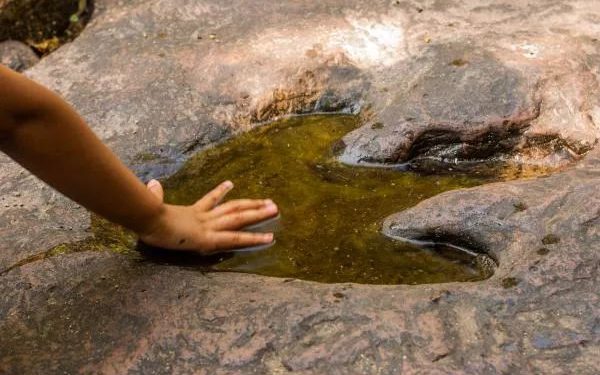Jakarta, Indonesia Sentinel — Researchers from the University of Oxford and the University of Birmingham have uncovered dinosaur footprints in the UK. The discoveries considered the longest uninterrupted trail stretches over 150 meters.
The excavation, conducted at Dewars Farm Quarry in Oxfordshire, revealed five distinct dinosaur trackway, ranging from long-necked herbivorous Cetiosaurus to the giant carnivorous Megalosaurus.
Four of these trackways were made by giant, long-necked herbivorous dinosaurs known as sauropods, most likely Cetiosaurus, which could grow up to 18 meters in length.
The fifth trackway was created by a theropod carnivorous dinosaur, Megalosaurus, identified by its distinctive three-toed clawed footprints.
One area of the site also shows overlapping tracks of both carnivorous and herbivorous dinosaurs, raising questions about whether and how these species might have interacted.
“These footprints provide an extraordinary window into the lives of dinosaurs, revealing details about their movements, interactions, and the tropical environment they inhabited,” said Kirsty Edgar, a researcher from the University of Birmingham, in a statement on Thursday.
Emma Nicholls, a vertebrate paleontologist at the Oxford University Museum of Natural History (OUMNH), noted that while scientists have long studied Megalosaurus, these findings continue to yield fresh insights.
“Scientists have known and studied Megalosaurus longer than any other dinosaur on Earth, yet these recent discoveries show there is still evidence out there waiting to be uncovered,” Nicholls said.
Newly Uncovered Dinosaur Tracks
According to The Guardian, the newly discovered tracks were buried under layers of mud and were first noticed when quarry worker Gary Johnson felt an “unusual bump” while operating heavy machinery to clear clay from the quarry floor.
Experts were subsequently called in to investigate the discovery. Collaborating with quarry management, teams from Oxford and Birmingham Universities led a group of around 100 people in a week-long excavation in June 2024.
The team ultimately uncovered approximately 200 dinosaur footprints and created detailed 3D models of the site using aerial drone photography.
These recent discoveries are linked to a significant find in the same area back in 1997, when limestone excavation revealed over 40 sets of dinosaur footprints, with some trackways stretching up to 180 meters.
At the time, the site provided crucial new insights into the types of dinosaurs that roamed the UK during the Middle Jurassic Period.
Sangmong: The Cultural and Historical Significance of the Bali Tiger
Recognized as one of the most scientifically significant dinosaur footprint sites in the world, the area was designated a Site of Special Scientific Interest (SSSI). However, much of the original site is no longer accessible, and photographic records from the time were limited by the technology available before digital cameras and drones became widely used.
The newly uncovered tracks add significant value to the site. Despite the 30-year gap between these two discoveries, modern techniques and technology have enabled researchers to document the footprints more comprehensively than ever before.

























